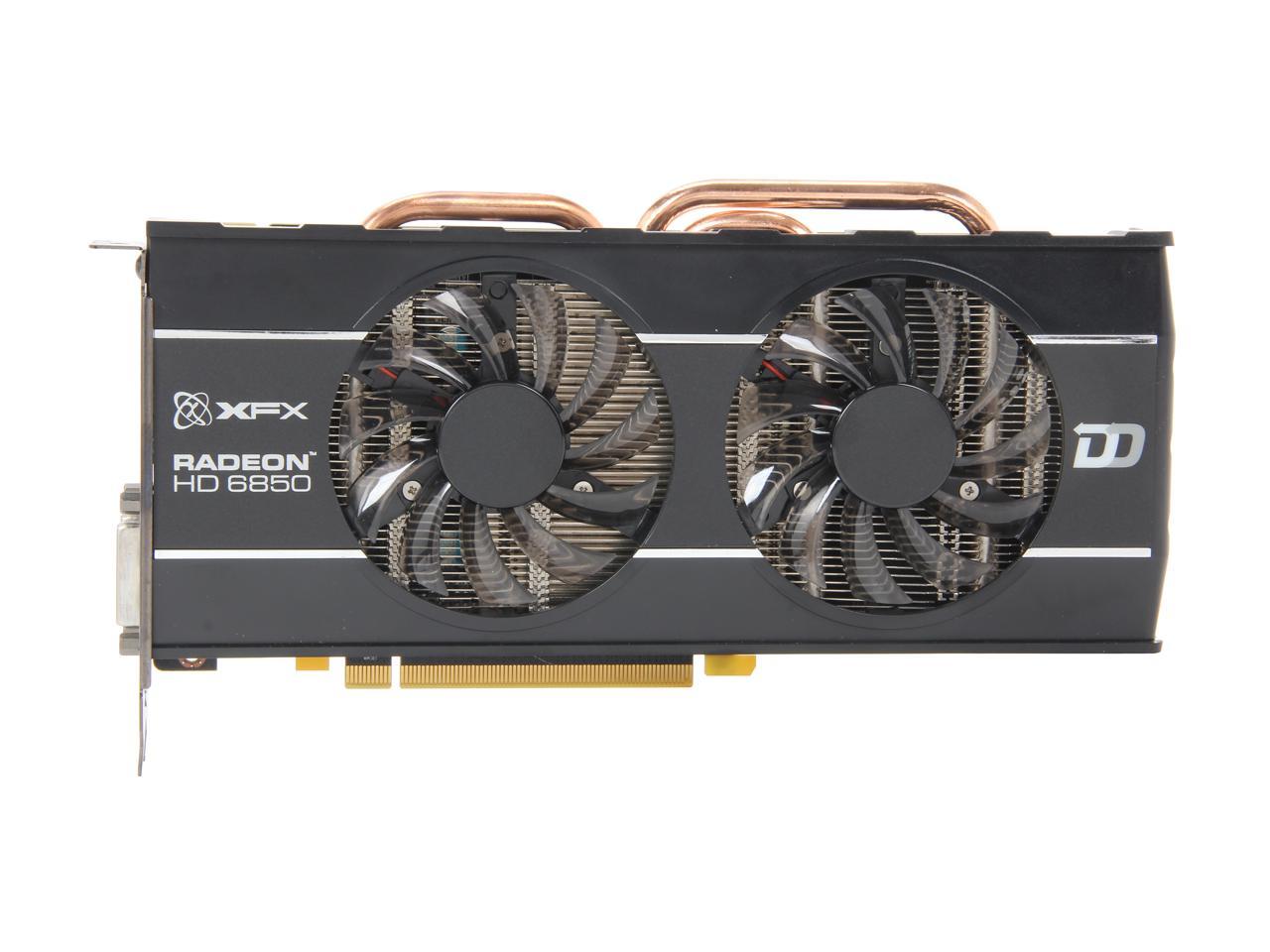

Our reference Radeon HD 7870, which came to us directly from AMD, had no trouble climbing from its stock 1000MHz clock speed all the way up to a blistering 1275MHz. One of those advantages is a rather substantial amount of overclocking headroom. The new Radeons therefore have to play up their other advantages in order to seduce prospective buyers. In a nutshell, the 7800-series Radeons deliver only slightly better performance per dollar than the prior-gen Radeon HD 6900 cards, though they have the potential to be much cheaper. Nvidia charges a pretty penny for its freshly released GeForce GTX 680, too, which has a smaller GPU and the same memory interface width as the GeForce GTX 560 Ti yet sells for twice as much. Whispers around the industry suggest the higher prices can be attributed the limited supply of 28-nm wafers coming from TSMC, the Taiwanese foundry that manufactures chips for AMD, Nvidia, and other firms like Qualcomm.

#XFX RADEON HD 6850 DESKTOP SERIES#
Unfortunately for bargain hunters, AMD has priced the Radeon HD 78 at $249 and $349, respectively, well above the $180-240 price range the 6800 series occupied when it arrived in October 2010. Thanks to a new 28-nm chip fabrication process and a revised graphics architecture, dubbed GCN, they even outpace the old Radeon HD 6900 series cards, which are based on larger chips. The newcomers are quite a bit faster, too. In that initial encounter, we learned that these cards have all the makings of successors to the popular Radeon HD 6800 series: similar-sized GPUs and memory interfaces, with lower power requirements. We studied them, and the Pitcairn graphics processors that dwell within them, about three weeks ago. We’re already well acquainted with AMD’s Radeon HD 78 graphics cards.


 0 kommentar(er)
0 kommentar(er)
